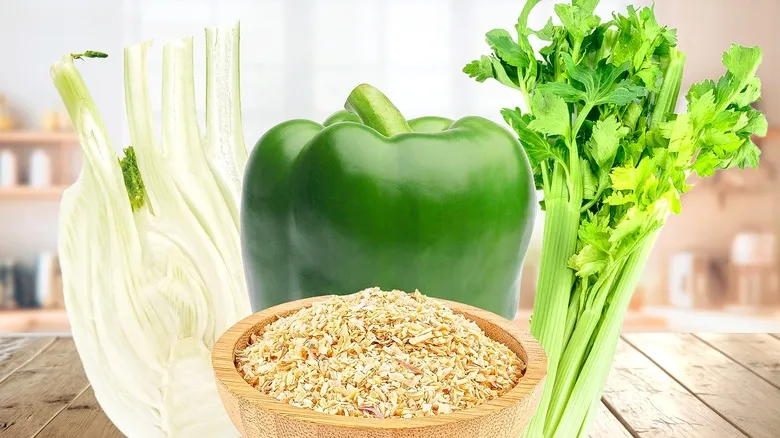1. Fennel
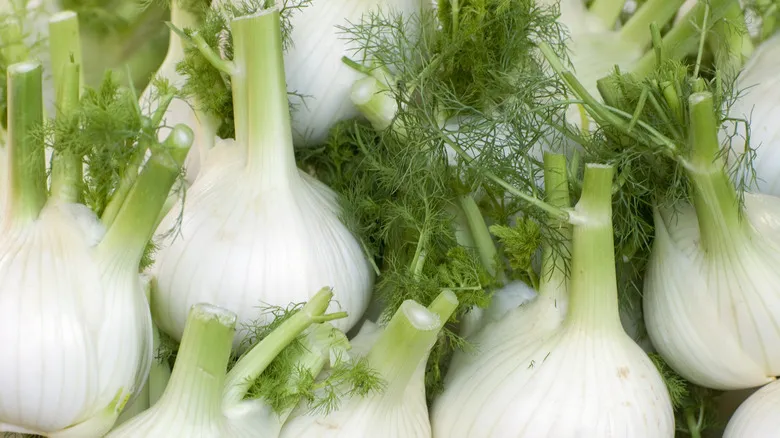
Crisp, refreshing, and sweet, fennel is a hardy perennial flowering plant belonging to the carrot family. Its delicate notes of licorice and anise make it a fantastic addition to crudités platters or a satisfying snack on the move. Both the fronds and bulbs are edible, serving as a great alternative to onions in various recipes. While it’s delightful raw and on its own, fennel truly excels when sautéed, grilled, or pan-seared, effortlessly enhancing slaws, salads, and soups.
Fennel boasts a rich history in both medicine and cuisine, tracing back to ancient Egypt. In the Middle Ages, it was placed at doorways to repel evil spirits, and in ancient China, it was used to treat snake bites. If you haven't yet prepared this versatile vegetable, start by slicing the bulb in half lengthwise, then thinly slice the stalks and leafy fronds. A perfect substitute, fennel is typically easy to find in most grocery stores and adds a vibrant, aromatic flair to many dishes that usually call for onions.
2. Asafoetida
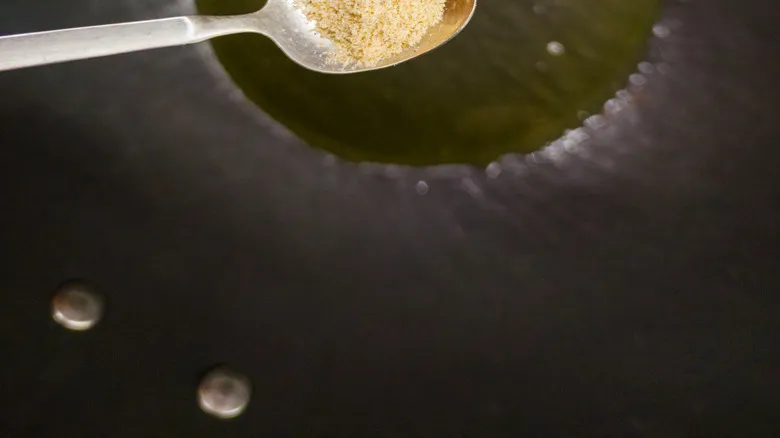
Also referred to as "hing," asafoetida is a powerful spice obtained from the dried sap of a plant in the carrot family. Widely utilized in Indian and Ayurvedic cooking, this aromatic and pungent ingredient serves as an excellent substitute for garlic and onions when you desire flavor without the texture. With its deep umami characteristics, asafoetida excels in curries, dals, and spice mixes.
Not a newcomer to the culinary world, historical records indicate that ancient Romans combined asafoetida with pine nuts as a unique seasoning. Similar to onions, it is typically added to hot oil or butter to form the foundation of many dishes, drawing out the subtle flavors and nuances, much like other essential spices in Indian cuisine.
A word of caution: a small amount is sufficient, as asafoetida is a strong, aromatic, and savory spice. You can find this modest beige powder packaged in small tins or jars in the spice sections of most international grocery stores or through online spice retailers.
3. Celery
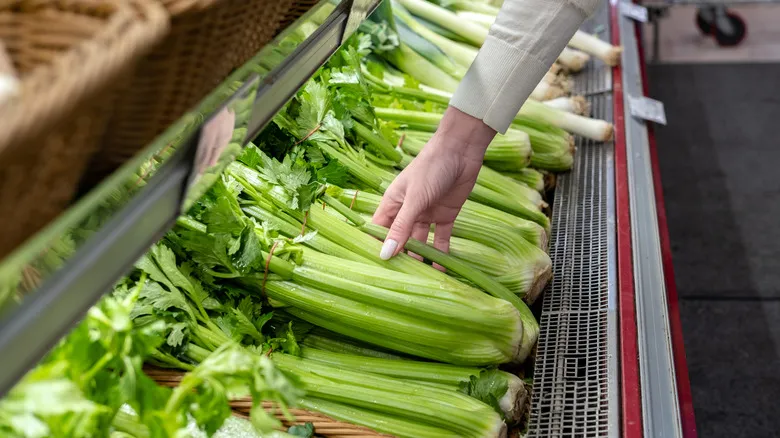
A member of the parsley family, this remarkably adaptable crisper essential is one of the simplest and most commonly found vegetables you may already have on hand as an onion alternative. With its lively green stalks and leaves, celery has historically served as a foundation for stews, sauces, stir-fries, and a multitude of other dishes. The ancient Greeks and Romans utilized celery as a flavorful seasoning, while the ancient Chinese valued it for its medicinal benefits. In ancient Greece, it was also regarded as a symbol of victory and good fortune, often crafted into garlands for athletic champions.
With its mild flavor, fibrous texture, and satisfying crunch, celery is a fantastic snack that is both hydrating and filling. When paired with carrots and green bell pepper and used as a substitute for onions in recipes, as recommended by Nigella Lawson, it creates a delicious base for various savory dishes. To keep celery fresh, green, and crisp, store it tightly wrapped in aluminum foil in your crisper, or properly freeze it for longer preservation.
4. Chives
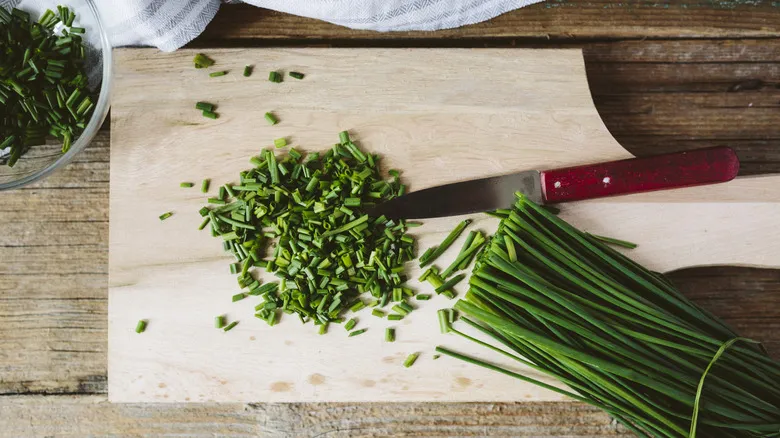
Chives, the most delicate member of the onion family, serve as a wonderful substitute when you find yourself without an onion. Their mild flavor, vibrant green hue, and charming purple flowers make them an attractive garnish or addition to casseroles, baked potatoes, soups, and dips. Not only are chives incredibly easy to use, but they also provide an affordable way to introduce a subtle onion-like zest to a variety of savory dishes.
With a history spanning over 4,000 years, chives have long been valued for their medicinal benefits, once thought to ward off evil spirits and aid digestion. Nowadays, they are popular among chefs and gardeners alike for their natural pest-repelling qualities. To prepare chives while preserving their delicate taste, simply lay them flat on a cutting board and slice them finely with a swift, smooth motion. For the best flavor, use them fresh, as cooking can quickly diminish their subtle fragrance and aroma.
5. Onion powder
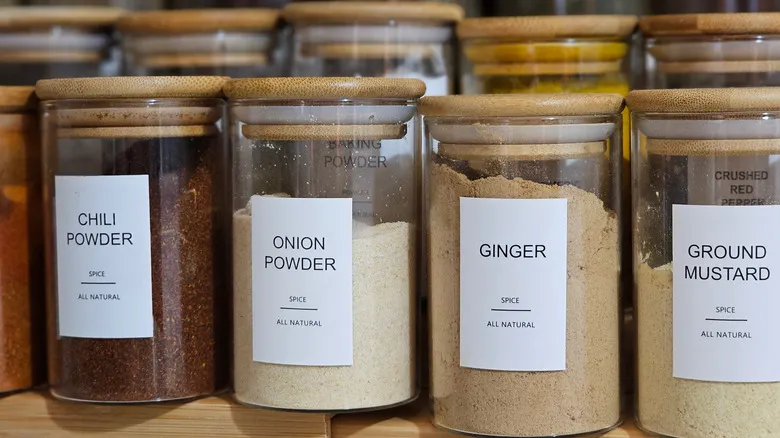
Crafted from dehydrated and ground onions, onion powder is a staple that truly deserves the spotlight in your spice collection. It offers a convenient way to enhance the flavors of marinades, rubs, dressings, and soups, providing the same rich, satisfying taste we love in fresh onions. It's safe to say that this is one of the top choices when seeking an onion substitute. The history of onion powder dates back to ancient Egypt, where onions were valued not only for their flavor but also for their symbolic significance—representing eternity with their endless, layered structure.
When stored correctly, onion powder boasts an impressive shelf life of up to three years. Keeping a jar in your pantry can save you a trip to the grocery store on a cold winter evening when you're ready to prepare a warm, comforting dish. One of the most versatile items you can have in your kitchen, making your own onion powder at home is also quite simple. Just dehydrate thinly sliced onions, grind them into a fine powder, and enjoy a homemade burst of flavor that enhances a variety of savory recipes.
6. Scallions/Green Onions

Whether you call them green onions or scallions, these easy-to-cultivate members of the onion family offer a subtle yet flavorful kick that complements a wide range of recipes that include onions. Incorporating them into your simmering soup, hearty sandwich, or pasta dish is a guaranteed way to add a crisp, mildly sweet zest without overpowering the overall flavor.
Both the white bulbs and green tops provide fresh, grassy notes, but they serve different roles in cooking. For instance, the vibrant green stalks are often used as a garnish in various Asian and Asian-inspired dishes, such as scallion pancakes, fried rice, and poke bowls. The white bulb and the part that transitions into the green stalks are typically sliced and sautéed in hot oil, offering a flavor that is milder than that of white or yellow onions. If you're new to scallions, consider adding some to a homemade salad dressing made with just a few simple ingredients.
7. Leeks
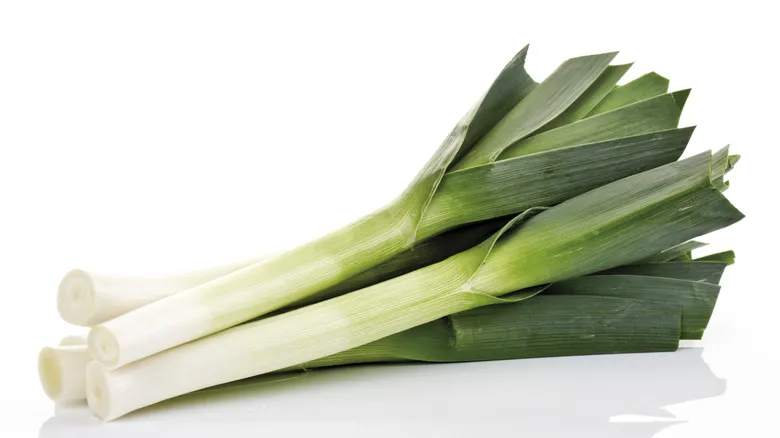
Another member of the allium family, leeks offer a gentle, sweet, and unique flavor profile. Their elongated white and green stalks are excellent for roasting or grilling with a splash of olive oil, caramelizing alongside slow-cooked meats, or serving as a base for sophisticated dishes like Julia Child's potato leek soup or a delicious mushroom leek quiche.
Leeks possess a softer texture and a milder taste compared to onions, ensuring they won't overshadow other ingredients. This makes them a subtle yet flavorful option, adding a touch of refinement as a delicate substitute for white and yellow onions, particularly in recipes where balance and nuance are essential.
In ancient times, leeks were highly regarded, even favored by Roman Emperor Nero, who believed they enhanced his singing voice. If you have leeks on hand, consider using them in creamy sauces, braised vegetable medleys, or savory baked tarts to infuse your dishes with their signature elegance.
8. Ramps
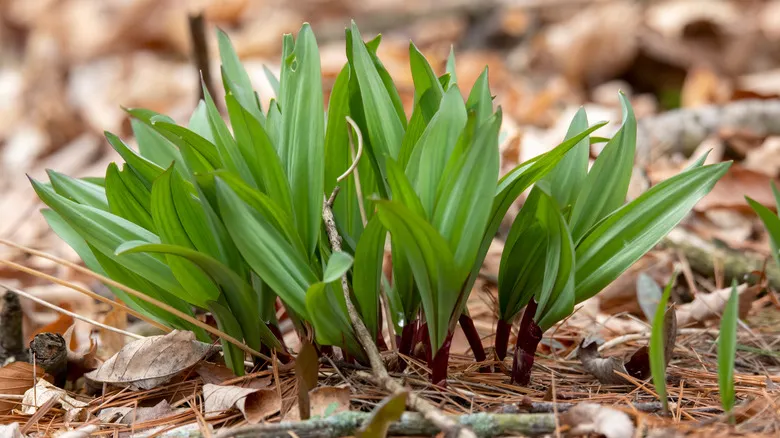
Commonly referred to as wild leeks, ramps are a seasonal delight cherished by both culinary enthusiasts and professional chefs for their distinctive garlicky-onion taste and limited seasonal availability. These wild alliums serve as a flavorful alternative to onions, emerging only in the spring months across North America, which makes them a highly sought-after seasonal delicacy.
Ramps are easily identifiable by their reddish stems, bright green leaves, and distinctive aroma. Their flavor—a delightful blend of onion and garlic—makes them a versatile ingredient to experiment with in the kitchen. You can incorporate them into pestos or salads, mix them into fluffy scrambled eggs, or sprinkle them over baked potatoes. No matter how you choose to use them, ramps can add a touch of seasonal enchantment to a variety of dishes.
Historically, ramps were a vital food source for Indigenous peoples and early Appalachian settlers, valued for their ability to provide essential nutrients after long winters. You can grill them on their own or pair them with springtime favorites like peas and skewered asparagus to enjoy vibrant seasonal flavors.
9. Shallots
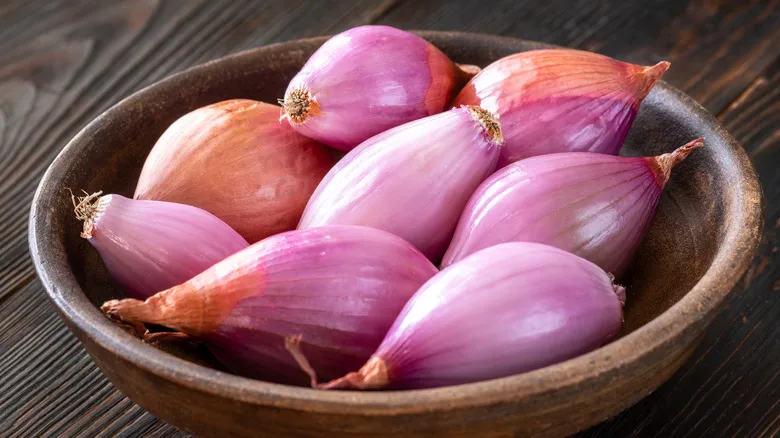
Shallots and onions can be used interchangeably in many dishes, as these small, elegant purple alliums offer a subtle sweetness with a hint of garlic flavor. Encased in shiny brownish-red skins, you may have noticed shallots in the produce section alongside white, red, and yellow onions during your grocery shopping. If you haven't yet incorporated them into your cooking, substituting shallots for onions is a simple way to introduce them into your kitchen and recipe repertoire.
Commonly found in French cuisine, these teardrop-shaped gems provide a gentle, smoky richness that enhances the depth of sauces, vinaigrettes, and roasted meats or vegetables, without the pungent sulfur taste often linked to onions. When finely chopped, shallots quickly dissolve in hot oil or butter, and their delicate, nuanced flavors are sure to elevate your next pot of sauce, soup, or curry.
10. Garlic
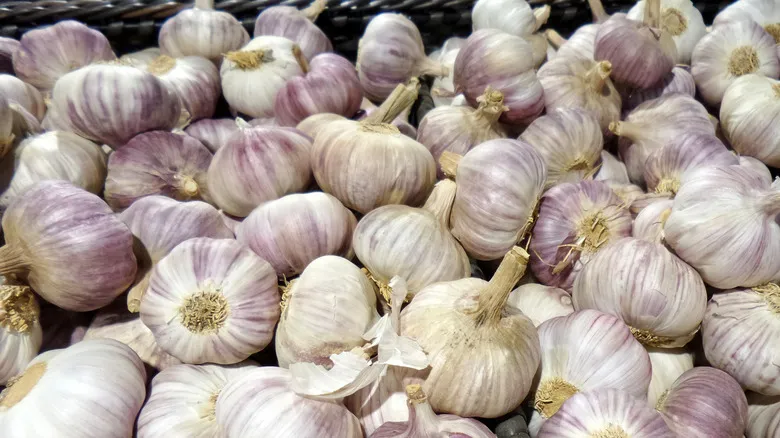
Garlic is a fundamental ingredient in cooking, celebrated for its rich and savory flavor that can elevate even the most basic dishes. A member of the allium family, garlic is easily identifiable by its round bulbs encased in delicate white skin, containing clusters of fragrant cloves. Its flavor profile varies from sharp and spicy when raw to sweet and mellow when roasted, making it an incredibly adaptable ingredient.
As a replacement for onions, garlic provides a more intense and vibrant flavor that stands out where onions might be less pronounced. Whether you're spreading it as a thick paste for garlic bread or using it in place of onion as a base for soups or dips, garlic is a readily available ingredient that can have a long shelf life when stored correctly. Whether sautéed, roasted, or freshly minced, garlic imparts a distinctive kick that is hard to replicate, solidifying its status as a kitchen staple.
11. Celeriac

If you're seeking a milder substitute for onions, consider celeriac, also referred to as celery root, knob celery, or turnip-rooted celery. This beige, somewhat dusty root vegetable boasts an earthy, nutty flavor, complemented by a hint of celery's fresh, herbaceous notes.
When paired with robust grilled meats or incorporated as a base for sauces, gratins, soups, and purees, celeriac brings depth and richness, making it a tasty alternative to onions. Fans of turnips and kohlrabi may also appreciate celery root in a creamy soup, garnished with a generous scoop of bubbly Gruyère, Swiss, or Comté cheese.
If you're preparing a batch of broth or stock, celeriac not only serves as an excellent substitute but also complements onions beautifully. So, the next time you find yourself in the produce section, consider adding this versatile vegetable to your cart — it might just become your new favorite gnarly root for fall and winter.
12. Spring Onions

Spring onions, while similar to scallions, are distinct in their own right. How can you differentiate them? They feature small red or white onion bulbs at their base, as they are harvested while still young, before the bulbs have fully matured. With a milder and sweeter flavor, spring onions offer a gentle alternative to the sharper taste of scallions and the more robust regular or pearl onions.
Their natural sweetness makes them perfect for braising or grilling, serving as a refined side dish. Spring onions can be a delicious and sophisticated substitute for onions when sliced and sautéed in a pan, just like you would with traditional onions. Like other alliums, you can keep spring onions in the crisper for up to five days, ideally wrapped in a dry paper towel to prevent moisture buildup. Next time you visit your local farmers' market, be sure to grab a bunch of these vibrant green beauties — they may just become your new go-to onion alternative.
Recommended

What's In McDonald's Big Mac Sauce, And Can You Recreate It At Home?

The Etiquette Tip To Always Keep In Mind When Dining At Restaurants In Japan

How A Piece Of Bread Is The Answer To A Smokey Air Fryer

The Unique Cut Of Fish Martha Stewart Uses For Her Fish Burgers
Next up

